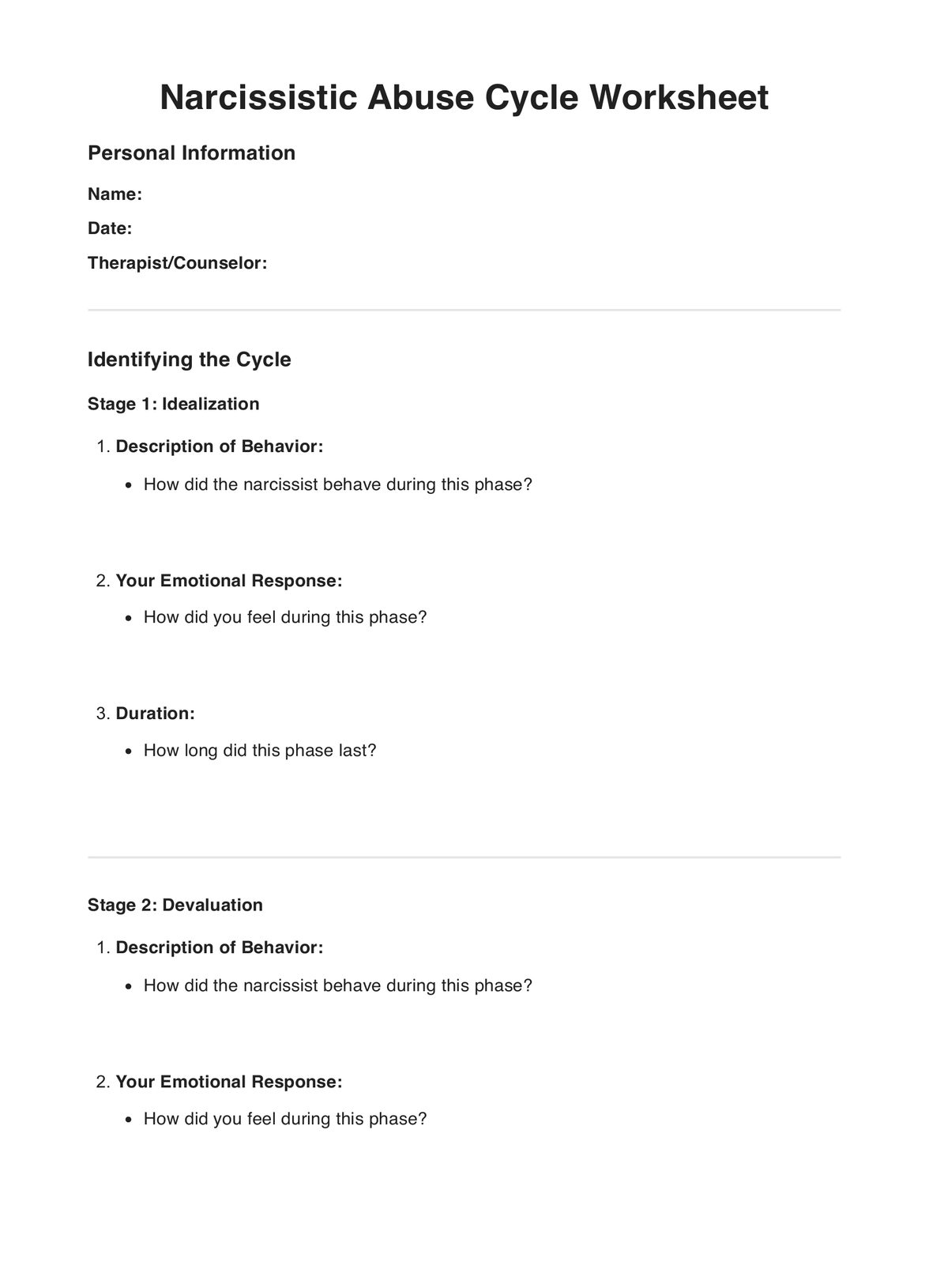Individuals who suspect they are in a relationship with a narcissist or mental health professionals working with such individuals.

Narcissistic Abuse Cycles
Experience Carepatron, a trusted Narcissistic Abuse Cycle app. Our secure, user-friendly platform aids in understanding and managing narcissistic abuse.
Use Template
Narcissistic Abuse Cycles Template
Commonly asked questions
Narcissistic Abuse Cycles are used when there is a suspicion of narcissistic abuse in a relationship.
Narcissistic Abuse Cycles are used to identify patterns of behavior that characterize narcissistic abuse.
EHR and practice management software
Get started for free
*No credit card required
Free
$0/usd
Unlimited clients
Telehealth
1GB of storage
Client portal text
Automated billing and online payments











